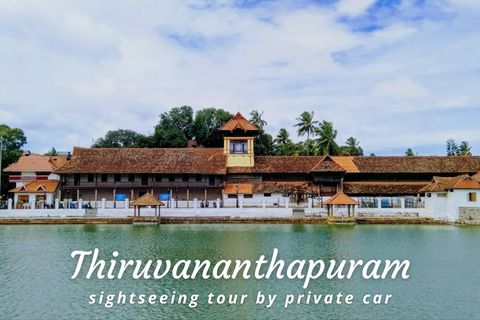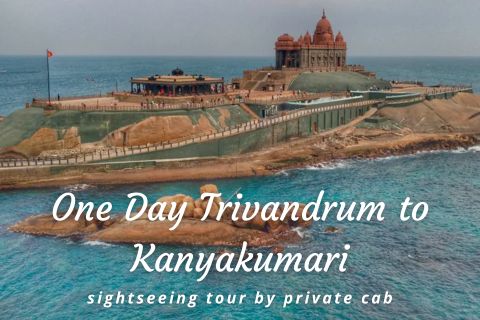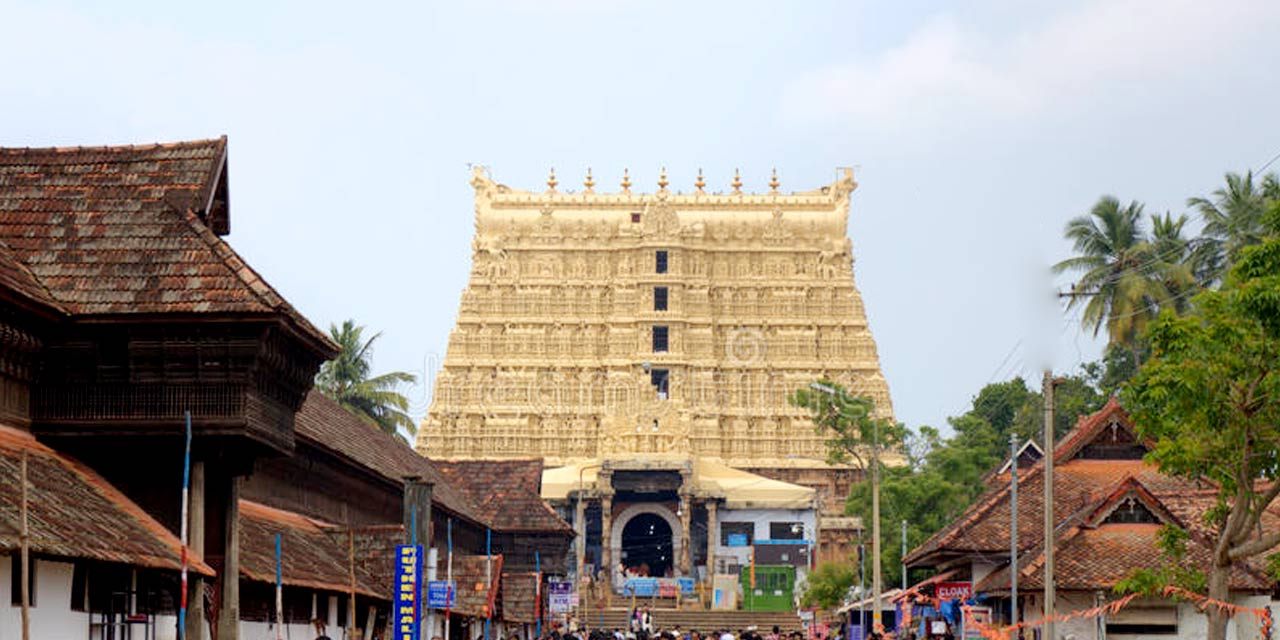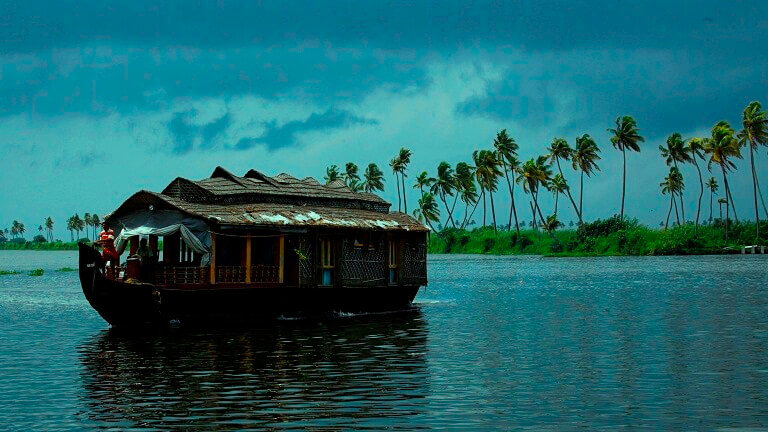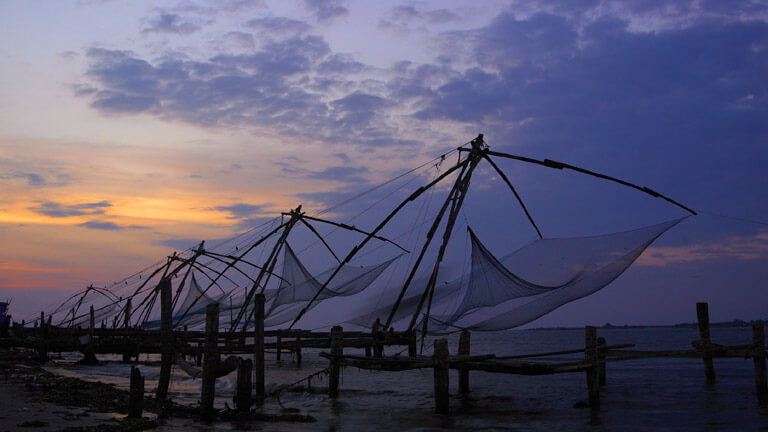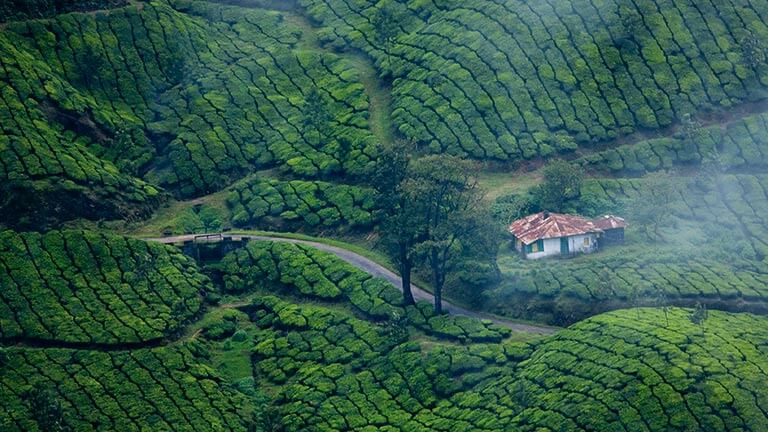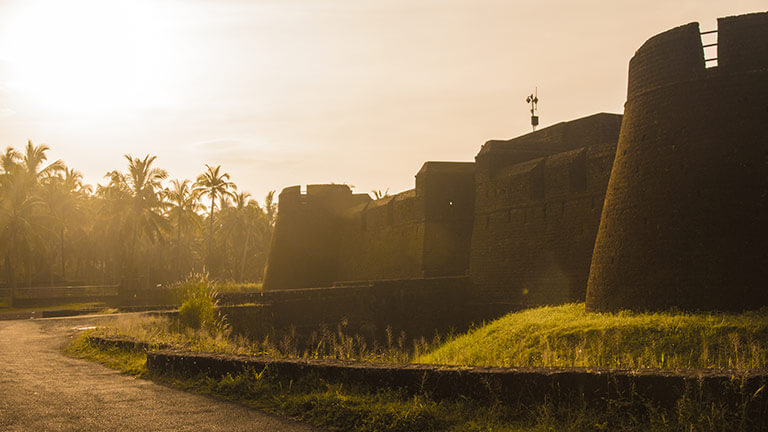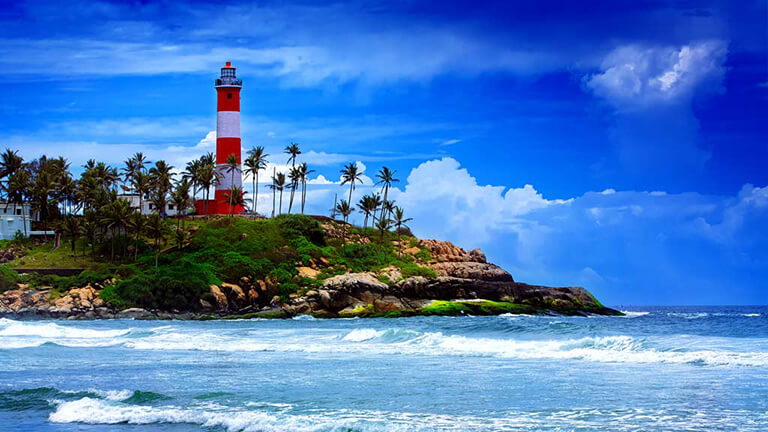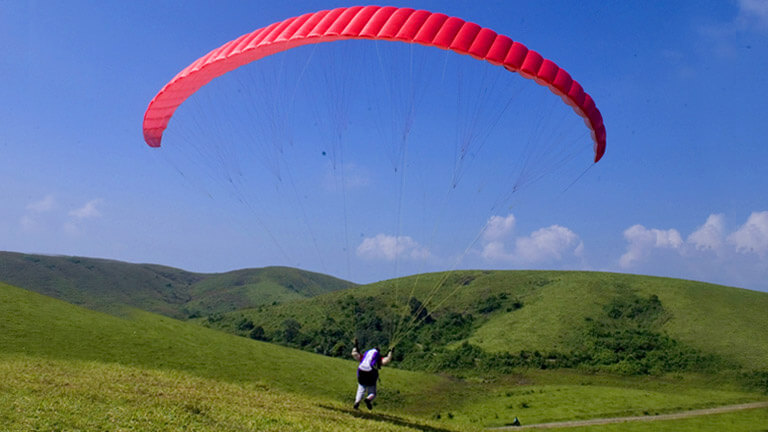Padmanabhaswamy Temple Trivandrum Entry Fee
- 150 per person for Special Darshan
- 180 per person for Special Darshan with Prashad
Padmanabhaswamy Temple Trivandrum Phone
0471 246 4606
Rating:  | 4/5 stars
| 4/5 stars
Based on total 12 reviews
Padmanabhaswamy Temple Trivandrum Address: W Nada, East Fort, Pazhavangadi, Thiruvananthapuram, Kerala, 695023, India
Kerala Tour Packages
Padmanabhaswamy Temple Trivandrum Timings
| Day | Timing |
|---|---|
| Monday | 3:15 am – 12:00 pm 5:00 pm – 7:20 pm |
| Tuesday | 3:15 am – 12:00 pm 5:00 pm – 7:20 pm |
| Wedesday | 3:15 am – 12:00 pm 5:00 pm – 7:20 pm |
| Thursday | 3:15 am – 12:00 pm 5:00 pm – 7:20 pm |
| Friday | 3:15 am – 12:00 pm 5:00 pm – 7:20 pm |
| Saturday | 3:15 am – 12:00 pm 5:00 pm – 7:20 pm |
| Sunday | 3:15 am – 12:00 pm 5:00 pm – 7:20 pm |
Sree Padmanabhaswamy Temple Darshan Timings in Morning:
3:15 am to 4:15 am
6:30 am to 7:00 am
8.30 am to 10:00 am
10:30 am to 11:10 am
11:45 am to 12:00 pm
Evening Darshan Timings of Sri Padmanabha Swamy Temple:
5:00 pm to 6:15 pm
6:45 pm to 7:20 pm
Sree Anantha Padmanabhaswamy Temple in Thiruvananthapuram, Kerala is a prestigious Hindu temple. It is dedicated to Lord Anantha, an avatar of Lord Vishnu. Thiruvananthapuram literally means “The land of Lord Anantha”.
Padmanabhaswamy Temple architecture is an amalgam of Kerala style and Dravidian style, and the temple features a 100-foot tall gopuram (ornate entrance gate). Inside, in the main shrine, an 18-foot idol of the principal deity lies on Adi Shesha, in the Ananthasayanam posture.
Padmanabhaswamy Temple is among the 108 holy temples of Lord Vishnu, and it is one of the wealthiest temples in the world.
The temple has a long history, and its hidden treasure has piqued people from time to time.
Legend about Padmanabhaswamy Temple
The date of the temple’s foundation is unknown. But as per popular beliefs, it was established about 5000 years ago.
The palm leaf records at the temple mention that sage Divakara Muni Vilwamangalam founded it. He performed rituals at Padmanabhaswamy Temple Kasaragod, also known as Ananthapura Lake Temple. And that temple is said to be the original seat (moolasthanam) of Anantha Padmanabhaswamy.
As per the legends, Lord Vishnu appeared before sage Vilwamangalam as an orphan kid. The sage felt pity and allowed him to stay at the temple. He took his help in the daily activities of the temple. One day, Vilwamangalam acted harshly on the kid, who then, ran away towards the forest.
But, Vilwamangalam soon realized that the boy was Lord Vishnu himself. So, he went to find him. He followed him inside a cave, which led to present-day Thiruvananthapuram. The boy then disappeared into a mahua tree. The tree fell and took the shape of Lord Vishnu lying on the thousand hooded serpent – Adi Shesha.
The size of Lord Vishnu in this Ananthasayanam posture extended up to 8 miles, and sage Vilwamangalam requested him to condense to a smaller size. Lord shrank, but still, the sage couldn’t see him completely. Trees obstructed his view, and he could see Lord Anantha in three parts - the face, the stomach area and the feet.
The doors of Shri Padmanabhaswamy Temple in Trivandrum (Thiruvananthapuram) show the large idol in the same way as the sage saw the lord.
History of Padmanabhaswamy Temple Trivandrum
Although the exact date of the temple construction isn’t known, the earliest mention of the temple dates to the 9th century.
Later, during the 15th century, the roof of sanctum sanctorum was repaired, as mentioned in the palm leaf records. The Ottakkal Mandapam in the premises was built about the same time. And around the mid-17th century, King Anizham Thirunal Marthanda Varma ordered major renovations in the temple.
The sanctum sanctorum was reconstructed, and the old idol was replaced by a statue made of 12,008 shaligram stones and various herbs, collectively called katu-sharkara. By 1739, the work on the statue was completed. The king also built the stone corridor, the gate and the flagstaff.
Then, in 1750, he dedicated his kingdom to the lord, in the Thrippadidanam ceremony.
In 1758, the pillared outdoor hall – Karthika Mandapam, was built by king Karthika Thirunal Rama Varma. And in 1820, during the time of queen Gowri Parvathi Bayi, the large Anantha Shyana mural was drawn.
Another major event in Sree Padmanabhaswamy Temple history was recorded in 1936, during the reign of Chithira Thirunal Rama Varma. He outlined the Kshethra Praveshan Vilambram (or Temple Entry Proclamation) to allow every Hindu caste and creed in the temple.
Architecture of Padmanabhaswamy Temple
Sree Padmanabhaswamy Temple Trivandrum stands out for the detailed work in stone and bronze. The architecture is a fusion of Dravidian architectural style and Kerala style, and the temple resembles Adi Kesava Perumal temple of Thiruvattar. Even the deities look similar, lying in a reclining posture.
The magnificent seven-tier high gopuram, carved with elaborate designs, is the first structure you will notice. The large corridor inside is supported by beautifully carved stone pillars and sculptures of various Hindu deities. Beautiful murals also adorn the walls and ceilings in various parts of the temple.
Inside the sanctum, Sri Padmanabha reclines on Adi Shesha whose hoods form an umbrella over his head. The sanctum has three doors from which you can look at the reclining 18-foot idol of Lord Padmanabha.
Shri Padmanabhaswamy Temple Treasure
Padmanabhaswamy Temple is the richest temple in the world. The Padmanabhaswamy Temple trust, headed by the royal family of Travancore, looks after the assets.
The treasure is a collection of valuable objects accumulated over several thousands of years. It includes coins, statues, ornaments and many other precious artefacts, donated by rulers and traders from around the world.
The list includes kings from South Indian kingdoms like the Cheras, the Pandyas and the Pallavas, rulers from Greece, Jerusalem, Rome and other traders who came to visit the temple. Donations also poured in from various colonial powers of Europe.
And because of its wealth, the temple has also been referred to as the Golden Temple in various literatures.
The palm leaves records tell a lot about Padmanabhaswamy Temple treasure, and the gold and precious stones donated to the temple.
Gold has been mined in and around Trivandrum for thousands of years. And the area has also been a centre of trade. So, the gold came to the temple as offerings from the devotees. Many royal families in Southern India too stored their wealth in the temple vaults for safekeeping.
Also, during the reign of queen Gowri Lakshmi Bayi, many temples in Kerala were bought under the royal governance. And the ornaments and other valuables of those temples were stored in the vaults of Padmanabhaswamy Temple. The Kingdom of Travancore also provided refuge to many rulers who then donated their valuables to Lord Padmanabha.
Most of the records are yet to be studied, and out of the six known vaults, one still hasn’t been opened. Authorities also discovered two vaults later, both unexplored.
Image Gallery of Padmanabhaswamy Temple Trivandrum
Padmanabhaswamy Temple Vaults
The enormous wealth piled over the centuries is stored in the numerous vaults within the temple premises. And as per the estimates, the value is in several thousand crores.
The vaults C and F are opened periodically for rituals and ceremonies, and vault A and other chambers were opened after an order from the Supreme Court. From gold coins to precious stone ornaments and decorative items to other daily use products, the treasure is a live display of the past grandeur.
Vault A: This chamber contained the most amount of treasure discovered. Large wooden boxes full of gold coins and sacks of precious stones were stacked in the vault. Necklaces, medallions and headsets were among the thousands of items in the heaps. Golden lotuses, golden lamps used for aartis and ceremonial attires for the deity were also found.
Vault B: The vault B of Padmanabhaswamy Temple has still not been opened. The prevailing stories instil fears that it might bring ill fortune to the temple and the people involved. As per the beliefs, this secret chamber extends below the main shrine, and has biscuits of gold and silver. Pieces of jewellery and bells are also speculated to be present within vault B.
Vault C: This vault contains items used for special ceremonies. Along with gold jewellery to adorn the deity, vault C has items like gold mace, gold coconut shells and others. Religious things like golden umbrellas and golden serpent hoods for special rituals and festivals are also kept here.
Vault D: This chamber mainly comprises items used for decorating Garudavahana during special ceremonies and festivities in the temple.
Vault E: The vault E has religious items required for daily pooja. You’ll also find deeparadhana plates inside the chamber.
Vault F: The sixth vault also contains items for the daily pooja, along with three idols of Lord Padmanabha for the rituals.
Apart from the six vaults, authorities identified two more vaults in the temple. These are numbered as G and H and are believed to hold offerings and donations made to the temple.
Mystery of Padmanabhaswamy Temple Vault B
One of the Padmanabhaswamy Temple secret doors secures the mysterious vault B. The priests and scholars believe that mythological beings reside in this chamber, and the Ugra Narsimha avatar of Lord Vishnu protects this vault. Also, the serpent image on the door of the vault indicates danger.
The authorities tried to open it under court orders but couldn’t go beyond the ante-chamber. The untimely death of the petitioner and the death of another observer’s mother strengthened the belief in the myth.
As per a story, a group of people tried to open the vault a few decades ago and found it full of cobras. Legends say that sages have locked the door with powerful Naga Paasam mantras. And people believe that only an accomplished saint can remove the Naga Paasam by chanting Garuda mantra.
Shrines inside Padmanabhaswamy Temple
Sree Padmanabhaswamy Temple Thiruvananthapuram is regarded as a Maha-kshetram (Great Temple) because of its architectural magnificence, historical importance, spiritual significance, and several other reasons.
Inside the main shrine, the 18-foot katu-sharkara idol of Lord Padmanabha (an incarnation of Lord Vishnu) rests on the serpent Adi Shesha (also known as Anantha Shesha). The idol is made up of 12,008 shaligrams, and can be viewed through the three doors of the sanctum.
Through the first door, you can see the face and upper body of the deity. The right hand rests over a Shiva Lingam. The idol is surrounded by Lakshmi Devi (the Goddess of Prosperity) and Bhu Devi (the Goddess of Earth). And the presence of Shiva within the sanctum sanctorum adds to the sanctity of this Maha-kshetram dedicated to Vishnu.
You’ll find images of Lord Shiva adorning the walls in many other parts of the temple.
The second door of the shrine provides a glimpse of Lord Brahma, on a lotus flower, emerging from the navel of the deity. And from the third door, you can see the feet of Lord Padmanabha.
Along with the shrine of Lord Padmanabha, the temple complex has shrines for several other deities. You’ll find one dedicated to Narasimha, a part-lion and a part-man avatar of Vishnu. Another important shrine is built in the honour of Parthasarathi – Lord Krishna in the role of a charioteer. Lord Krishna himself is another avatar of Lord Vishnu.
Also, the Padmanabhaswamy Temple has shrines of Lord Ganesha (the elephant God), Lord Rama, accompanied by Sita, Lakshmana and Hanuman, and Sastha (the God of teaching) among others.
The temple premises also have a separate Thiruvambadi Sree Krishnaswamy Temple. It has got a standalone flag-staff and its own rites and rituals.
Other attractions within Padmanabhaswamy Temple complex
Apart from the holy shrines, Padmanabhaswamy Temple Kerala also has a few other things of importance which you must check.
Ottakkal Mandapam: It is a single stone platform in front of the sanctum sanctorum of Lord Padmanabha. It is a twenty square feet platform built with granite, which is two-and-a-half feet thick. You must ascend the platform to have a darshan of the lord. Ottakkal Mandapam is also used to perform Abhishekams (bathing ceremony) to Sree Padmanabhaswamy.
Abhisravana Mandapam: It is a stone structure present within the temple complex. Abhisravana Mandapam is in front of Ottakkal Mandapam, and it is used during special poojas during various festivals in the temple. Devotees also use this mandapam to meditate and pray to the lord.
Kulasekhara Mandapam: Kulasekhara Mandapam is another architectural marvel built with stone. The structure is supported by 28 pillars, each adorned with carved figures. The pillars produce distinct musical notes when you tap them. This mandapam is also known as Aayiramkaal Mandapam or Sapthaswara Mandapam.
Dhwaja Stambham: The Dhwaja Stambham is the 80 feet high flag-staff near the eastern corridor. It is made of teak wood and covered with gold foils. The top of the flag-staff has a figure of Garuda Swamy, the sacred bird used by the lord as his vehicle. The figure is in a kneeling posture.
Padmanabhaswamy Temple pond: Padmatheertham is a sacred pond on the eastern side of the temple. It is one of the many sacred water bodies in the state and among the oldest ponds in the city. Eight of the mandapams within the temple complex are in the Padmatheertham pond.
Sreebalippura: Sreebalippura is a magnificent rectangular corridor built of stone. As per the records, 4000 artisans, 6000 labourers and 100 elephants worked tirelessly to build this stone corridor which surrounds the main shrines of the temple. It is supported by 365 and a quarter monolith pillars. It is through Sreebalippura that the special Sreebali procession is taken through, during the Alpasi and Painkuni festivals.
Gopuram: Padmanabhaswamy Temple has nine entrances, indicating the nine orifices of the human body. And there’s a seven-storey high gopuram built on the eastern entrance. This 100-foot-high entrance tower is constructed in Pandyan style popular among the temples in South India. The 10 incarnations of Lord Vishnu are depicted on this gopuram, and on the top, you’ll see seven golden domes.
Mural paintings: The temple walls, including the outer walls of the shrines of Sree Padmanabha and Sree Krishna, have many murals. And the Ananthasayanam mural on the backside of the main sanctum is said to be the largest among the temple murals in Kerala. It is 18 feet long.
Padmanabhaswamy Temple clock: The clock tower – Methan Mani, near the temple entrance, is another spot you shouldn’t miss during your visit. It is a beautiful antique clock situated exactly opposite to the entrance of Padmanabhaswamy Temple.
Sree Padmanabhaswamy Temple Timings and Dress Code
Padmanabhaswamy Temple opening time is at about 3 AM, and it is open until late evening. But you can't take the blessings out of the darshan slots. Also, while visiting the temple, you need to follow the dress code.
Darshan begins with the morning Nirmalya Darshanam, from 3.15 AM to 4.15 AM. After that, you can get the darshan between 6.30 AM and 7 AM, between 8.30 AM and 10 AM, and between 10.30 AM and 11.10 AM. The last morning darshan slot is available from 11.45 AM to 12 PM.
The evening darshan timings of Padmanabhaswamy Temple are from 5 PM to 6.15 PM and from 6.45 PM to 7.20 PM.
The dress code for Padmanabhaswamy Temple mandates a mundu/dhoti for men, to be wrapped around the lower half of the body. The upper part of the body can be left bare or covered with a shawl known as angavastram. You can wrap a dhoti/mundu around your pants/shorts to match the dress code.
Young boys have to follow the same dress code as men.
Women can wear a saree/dhoti/pavada with a blouse to the temple. A t-shirt with a lehenga/ long-skirt is also allowed. You can also wrap a dhoti over jeans/salwar suits to comply with the dress code. The same rules apply to young girls.
Padmanabhaswamy Temple Entry Fee and Pooja Charges
The entry to the temple is free. You can enter the temple, stand in the darshan queue and wait for the darshan of the lord. But the queue can get long as time passes. And if you want to skip the long waiting time, you can buy the special Padmanabhaswamy Temple darshan tickets at the counter.
If you pay for the special darshan, you can enter the sanctum earlier than the people in the general line. Padmanabhaswamy Temple VIP darshan costs ₹150 or ₹180 (with prasad). Entry for two at ₹250, along with a pooja thali, is also available. The entry for kids is free.
The temple also has various special pooja rituals, which you can take part by booking in advance. Nirmalyam to Deeparadhana (3.30 AM to 4.45 AM) is priced at ₹3000, Nirmalyam to Usha Pooja (3.30 AM to 5.30 AM) is priced at ₹4000, and Nirmalyam to Pantheeradi Pooja (3.30 AM to 6 AM) is priced at ₹5000. The half-day Nirmalyam to Ucha Pooja can be booked with a payment of ₹12,000.
Various offerings like Aravana, Payasam and Unniyappam are also available for you to buy. These can be offered to Sree Padmanabha Swamy, Sree Narsimha Swamy, Sree Krishna Swamy and other deities in the temple complex.
Padmanabhaswamy Temple Festivals
Padmanabhaswamy Temple celebrates two major festivals – Painkuni (in March/April) and Alpasi (in October/November). Special celebrations also take place during other festivals of regional and national importance. Here are a few significant ones –
Alpasi Utsavam: Alpasi is a 10-day festival held in the Malayalam month Thulam. It falls in October/November. The Anujna function marks the beginning, with a flag hoisting ceremony (Kodiyettu) at Sree Padmanabhaswamy’s and Sree Krishnaswamy’s flag poles. Among the other functions that follow are Mannuneeru Koral, Mula Pooja and Kalasam.
Along with the routine rituals, special processions (sreebali) too, are carried out during Alpasi. These processions take place twice a day, once in the evening, and then, in the night. A group of priests carry the vahana (vehicle of deity) on the shoulders around the temple.
Six kinds of vehicles are used for these processions. These are the Simhasana (throne) on day 1, Anantha (serpent) on day 2, Kamala (lotus) on day 3, Pallakku (palanquin) on day 4 and 7, Indra on day 6, and Garuda on the rest of the four days. Garuda is considered as the favourite conveyance of Lord Padmanabha.
The vahanas of Padmanabha Swamy are in gold, while those of Narasimha Swamy and Krishna Swamy are in silver. These are beautifully decorated with colourful flowers.
On the eighth day of the Alpasi festival, during the night Sreebali, the Swamiyar and the Valiya Thampuran (the eldest male member of the Royal Family) offer Valiya Kanikka. Alpasi festival concludes with the Palliveta and Aarat processions, on the 9th and 10th day, respectively.
During Palliveta, the Valiya Thampuran and other male members of the Royal Family accompany the procession with swords and shields. And the Maharaja aims an arrow at a tender coconut that symbolizes evil.
On the tenth day again, during Aarat, the Valiya Thampuran and the male members of the Royal Family escort the deities with swords and shields. With grand pomp and show and music, the vahanas are taken to the Sanghumugham beach for the holy bath ceremony.
After the rituals, the procession returns to the temple.
Painkuni Utsavam: Painkuni festival is similar to Alpasi. But for Alpasi Utsavam, the emphasis is on the last day, the day of the Aarat procession, which is under Thiruvonam asterism. For Painkuni Utsavam, the importance is given to the first day, the day of Kodiyettu (flag hoisting) ceremony, which is held under Rohini asterism.
Painkuni also is a 10-day festival, which is celebrated during the Malayalam month Meenam, which falls in March/April. Massive figures of the Pandavas are erected at the eastern entrance during the festival.
Thiruvonam: Thiruvonam is another major festival celebrated at Padmanabhaswamy Temple. The day is regarded as the birthday of Lord Padmanabha. And on this day, as per the century-old tradition, six pairs of wooden Onavillu (bows) are offered to the deities.
Chingam 1st: Chingam is the first month of the Malayalam calendar, and the first day of the month is celebrated as the Malayalam New Year Day. Many devotees come to the temple on this day.
Vinayaka Chathurthi: This festival, also known as Ganesha Chathurthi, is celebrated in the Malayalam month Chingam. Offerings are made to the Ganesha idol in the temple complex and deeparadhana (aarti ceremony) is conducted during the worship.
Ashtami Rohini: Also known as Krishna Janmashtami, the day is regarded as the birthday of Sree Krishna Swamy. Ashtami Rohini also falls in the Malayalam month Chingam. Special decorations are made to celebrate this festival and milk abhishekam of Lord Krishna is performed. A well-decorated ivory cradle is placed on the Abhisravana Mandapam along with different images of the lord.
Navarathri Pooja: Navarathri is a 9-day festival celebrated in September/October. The idol of Goddess Saraswathi is also brought from Padmanabhapuram Palace in a grand procession, to be worshipped along with other idols. An enormous crowd of devotees come for the darshan.
Maha Shivarathri: Maha Shivarathri, is a festival celebrated in the honour of Lord Shiva. It falls in February/March. On this day, a special abhishekam of the lord is performed in the temple.
Rama Navami: The birthday of Lord Rama is celebrated on Rama Navami. The festival is in March/April and special poojas are performed in his honour.
Niraputhari: On this day, sheaves of grain are brought to Padmanabhaswamy Temple. And the chief priest carries out religious rituals. Afterwards, some sheaves are offered to the shrine of Sree Padmanabha Swamy. And the rest is spread on Ottakkal Mandapam and other shrines in the temple complex.
Murajapam: Murajapam is a 56-day ritual celebrated in the temple. Vedic scholars from various parts of the country chant Veda mantras in eight muras (rounds) during this ritual. Each round is seven-day long, and a sacred procession – Muraseeveli, is held, in which the idol is carried out by the priests in a decorated vahana. Murajapam is celebrated once in six years.
Lakshadeepam: The Padmanabhaswamy Temple Lakshadeepam function marks the completion of the 56-day Murajapam ritual. On this day, one lakh oil lamps are used to decorate the temple, and then the concluding procession is carried out. It is a grand festival, celebrated with massive fanfare. A large number of devotees visit the temple and attend the ceremonial procession.
Best Time to visit Padmanabhaswamy Temple
Summer and monsoon months are too humid for a comfortable visit to the temple. Therefore, winter, from October to February, is the best season to visit Padmanabhaswamy Temple. The temperature remains pleasant to spend a few hours at the temple complex.
Also, many important festivals are celebrated during those months, and you can witness the grandeur of the celebrations.
The early hours of Nirmalya Darshanam are the best for the darshan of Lord Padmanabha. You can get in the darshan queue at around 3 AM and see the special rituals carried out at the temple. There is not much crowd at this hour, and you will feel the spiritual vibes during the pooja.
Time required to explore Padmanabhaswamy Temple
You’ll need about 2-3 hours to get the darshan of the main deity and visit other shrines within the temple premises. However, if you buy the special darshan tickets, you can get past the general queue in comparatively lesser time.
Things to keep in mind while visiting Padmanabhaswamy Temple
- Only those who believe in Hindu faith are allowed inside the temple.
- Prepare to reach the temple before the darshan timings. They’re strict about the visiting hours.
- Get in the queue before the darshan begins. Even the special VIP line can get longer as the day advances.
- Take care of your kids, so they don’t get lost in the crowd.
- Have a bottle of water with you.
- Keep your shoes in the rack beside the main entrance.
- Follow the Padmanabhaswamy Temple rules for dress code during your visit.
- Only white/off-white dhoti and angavastram are allowed.
- Photography is prohibited in the temple complex.
- Handbags are allowed inside. But keep your mobile, camera, and other belongings in the locker room.
How to reach Padmanabhaswamy Temple Kerala?
Padmanabhaswamy Temple is one of the oldest temples in Trivandrum, Kerala, and it is also among the most revered temples. It is located right at the heart of the city and can be reached easily. The nearest railway station to Padmanabhaswamy Temple is Trivandrum Central. Local buses, autos and taxis are available from anywhere in Trivandrum and around. You can also hire a private cab from top car rental companies in Kerala to reach the temple.
And here are the various ways to reach Trivandrum –
By road – Trivandrum is connected to nearby cities by road. And regular buses are available from Coimbatore, Kochi, Madurai and other towns. Buses from distant cities like Bangalore and Chennai to Trivandrum are also available. The bus stand is only 2 km away from the temple. You can also hire a cab or drive to the temple from nearby towns like Kovalam, Kanyakumari and others.
By rail – Trivandrum is the capital of Kerala, and it is a hub for culture, academic and IT activities. Thus, it has regular trains from the towns in the neighbourhood and other far-off places in the country. The Trivandrum Central railway station is about 2 km away from Padmanabhaswamy Temple.
By air – Trivandrum International Airport connects the city to other places around the world. Direct flights from Indian cities like Bangalore, Delhi and Kochi are available. And it also has international flights from Singapore, Maldives and Middle East cities among others. Trivandrum airport to Padmanabhaswamy Temple distance is about 4 km.
FAQs about Padmanabhaswamy Temple
Aptly called the ‘God’s Own Country’, the captivating beauty of Kerala makes every holidaymaker visit this place again and again. Whether you wish to explore all the popular sightseeing places of Kerala, or just relax amidst the natural beauty, we at Kerala Tourism, a division of Holidays DNA make sure you enjoy every moment of your Kerala tour. We have carefully designed Kerala Tour packages keeping in mind the budget and other needs of our customers. Please fill the Contact Us form to know more about our offerings and have a great time exploring this beautiful destination.

